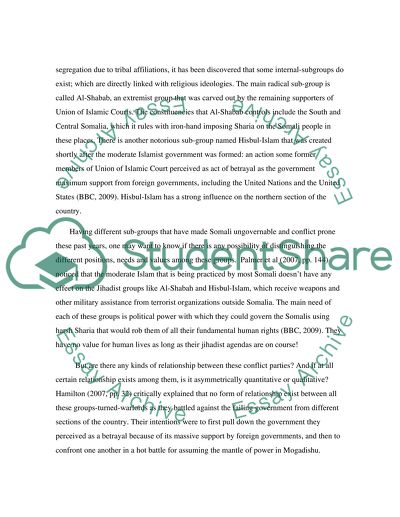Cite this document
(Conflict in Somalia Essay Example | Topics and Well Written Essays - 1500 words, n.d.)
Conflict in Somalia Essay Example | Topics and Well Written Essays - 1500 words. https://studentshare.org/politics/1554695-conflict-in-somalia
Conflict in Somalia Essay Example | Topics and Well Written Essays - 1500 words. https://studentshare.org/politics/1554695-conflict-in-somalia
(Conflict in Somalia Essay Example | Topics and Well Written Essays - 1500 Words)
Conflict in Somalia Essay Example | Topics and Well Written Essays - 1500 Words. https://studentshare.org/politics/1554695-conflict-in-somalia.
Conflict in Somalia Essay Example | Topics and Well Written Essays - 1500 Words. https://studentshare.org/politics/1554695-conflict-in-somalia.
“Conflict in Somalia Essay Example | Topics and Well Written Essays - 1500 Words”. https://studentshare.org/politics/1554695-conflict-in-somalia.


